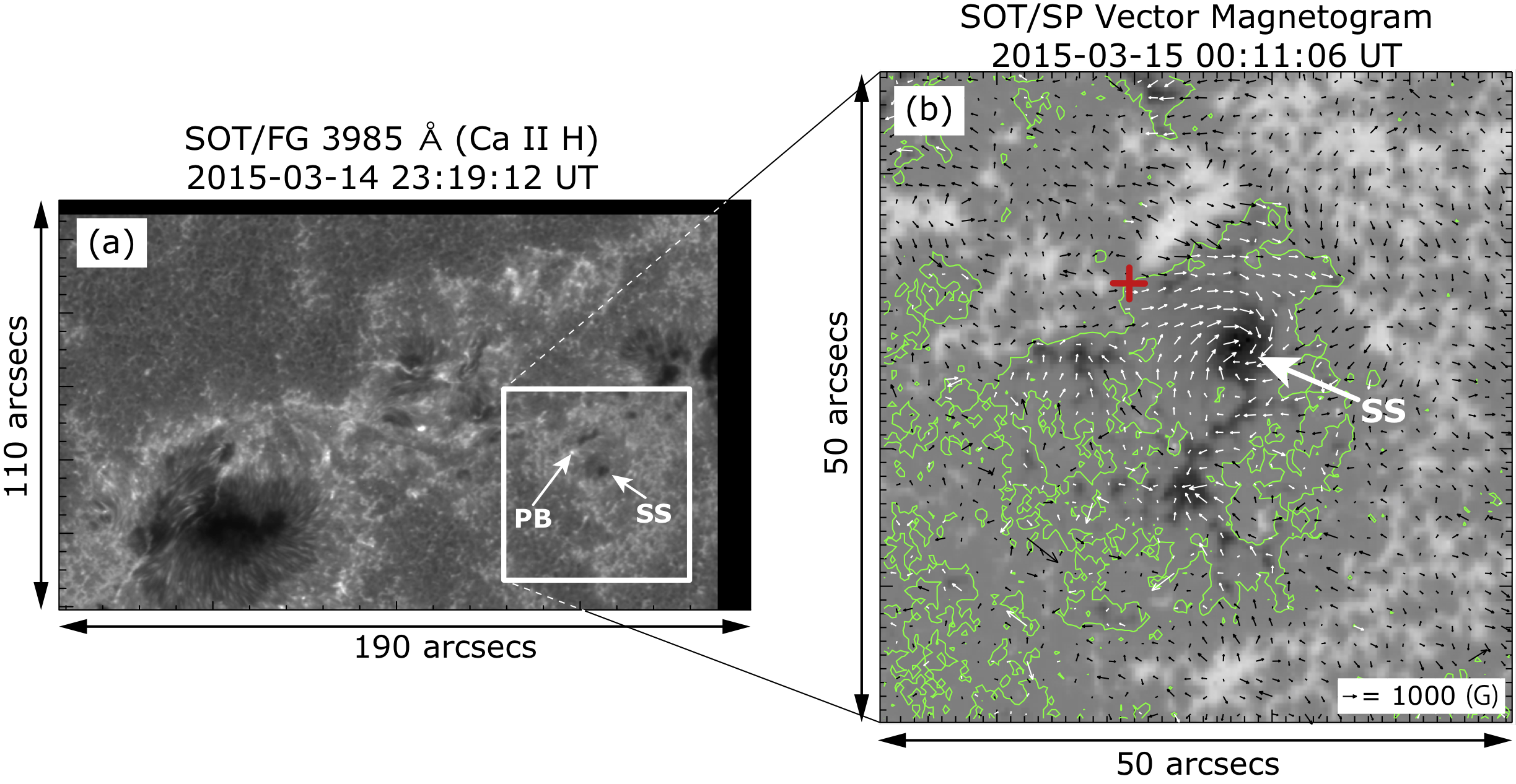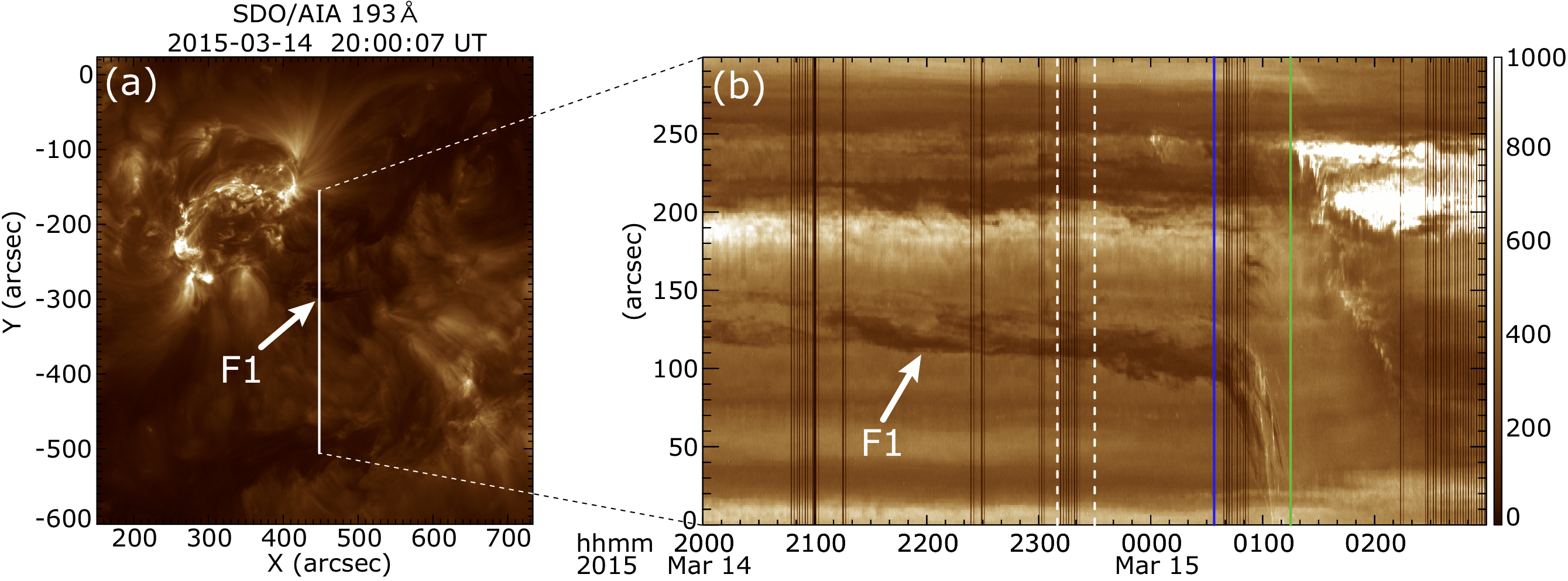Yumi Bamba (JAXA/Nagoya University)
Solar eruptions, such as flares and coronal mass ejections (CMEs) are sometimes disturb space environment around the Earth. Hence to understand onset mechanism(s) of solar eruptions is important not only as a fundamental question in solar physics but also to improve space weather forecast. It is statistically known that the incidence of solar eruption correlates with the X-ray peak flux of the corresponding solar flare. In other words, it has been broadly supposed that a major CME and accompanying geo-magnetic storm occur associated with a large flare such as an X-class flare. However, not only large flares but also small flares, such as a C-class flares, which are able to release only one tenth of energy of X-class flares, relate to flux rope eruption and can have a geo-effective impact. Actually the largest magnetic storm in solar cycle 24 was caused by a fast CME that was related to a small C9.1 flare that occurred on 15 March 2015 in solar active region (AR) NOAA 12297. Why such a huge solar eruption occurred associated with a small C-class flare? In order to answer the question by understanding the onset mechanism of the huge eruption, we precisely investigated the C2.4 that occurred prior to the C9.1 flare of the filament eruption.
Flares and CMEs sometimes occur related to eruption of a filament, which is dense and cool plasma residing in the hot corona. The magnetic field structure in the region where the C9.1 and related filament eruption occurred was complicated: there were several filaments including the one that erupted and caused the CME (henceforth we call it “erupting filament”). We hence carefully investigated the photospheric magnetic field, brightenings observed in the solar atmosphere, and the three-dimensional coronal magnetic field extrapolated from nonlinear force-free field modeling, using data from the Hinode and Solar Dynamics Observatory satellites. We found highly twisted magnetic field structure that is represented by a small filament locally in the region in a foot point of closed magnetic field that sustains the filament. The C2.4 flare occurred in the foot point and destabilized the filament, then the filament erupt approximately in one hour. Moreover, we discovered a tiny precursor brightening, which is approximately 700 km scale on the solar surface, exactly under the small filament, before the C2.4 flare. It is known from various previous studies that such precursor brightening is caused by a magnetic disturbances such as emergence of small magnetic fields from the interior of the Sun or cancellation. Therefore, from our results, it is suggested that the tiny precursor brightening is the proxy of a small-scale magnetic disturbance that triggered the sequential eruption from the small filament to the filament that caused the geomagnetic storm, the so-called St Patrick’s day storm.

Temporal evolution of the filaments and flare ribbons before and after the C2.4 flare onset. (a) Multiple filament structure including the erupting filament F1 and small filament. (b) Flare ribbons of the C2.4 flare. (c) A snapshot of the small filament eruption. The erupting direction is represented by the blue arrow.

Fine structures in the photosphere and chromosphere observed by Hinode. (a) Images of the tiny precursor brightening PB, which is indicated by the white arrow. (b) Photospheric magnetic field in the C2.4 flaring region surrounded by the white rectangle in panel (a). The background white/black indicates positive/negative of the radial components of the magnetic field in the range
± 2000 G. Green lines are magnetic polarity inversion lines and white/black arrows are horizontal components larger than 100 G. The red cross marks the location of the PB seen in panel (a).

Temporal variation of the erupting filament observed by SDO. (a) The erupting filament F1 is marked by the white arrow. The line-cut is over plotted by the white line. (b) Time-slice image of F1. The C2.4 and C9.1 flaring times are indicated by the vertical blue and green lines, respectively. The duration of the tiny precursor brightening (PB) is indicted as between the vertical white dashed lines.
Reference:
Bamba Y., Inoue S., and Hayashi K., “The Role of a Tiny Brightening in a Huge Geo-effective Solar Eruption Leading to the St Patrick’s Day Storm”, The Astrophysical Journal, 874, 73 (11pp), 2019, doi:10.3847/1538-4357/ab06ff
